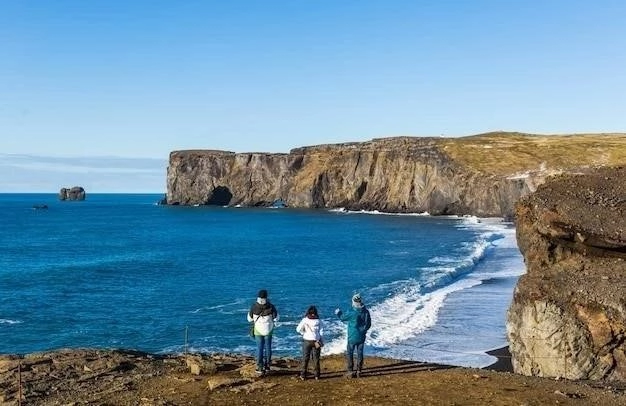From Sea to Shining Sea: Exploring America’s Diverse Landscapes
The United States, a land stretching “from sea to shining sea,” boasts an astonishing tapestry of landscapes. From the ancient, weathered peaks of the Appalachians to the sun-drenched deserts of the Southwest, the country’s terrain is a testament to the power of nature and the passage of time. This incredible diversity is evident in the dramatic contrasts found across the nation: verdant forests give way to arid deserts, towering mountain ranges meet fertile plains, and bustling urban centers share space with untouched wilderness.
Introduction: A Tapestry of Natural Wonders
The United States, a land sprawling across the North American continent, is a nation painted with a remarkable diversity of landscapes. From the Atlantic’s edge, where waves crash against sandy shores and rugged cliffs, to the Pacific’s embrace, where dramatic coastlines meet ancient redwood forests, the country unfolds as a breathtaking tapestry of natural wonders. Within its borders lie a symphony of ecosystems, each with its own unique charm and captivating beauty. Towering mountain ranges, sculpted by time and elemental forces, pierce the sky, their snow-capped peaks reflecting the sun’s brilliance. Vast plains, a sea of grasses swaying in the wind, stretch towards the horizon, their immensity evoking a sense of awe and solitude.
The country’s diverse topography is a testament to the powerful geological forces that have shaped the continent over millennia. The ancient Appalachian Mountains, their peaks worn smooth by time, stand as silent sentinels to the nation’s east, while the younger, more jagged Rocky Mountains rise dramatically in the west, their slopes cloaked in dense forests and alpine meadows. Carved by glaciers and rivers, canyons cleave through the earth, revealing layers of geological history in their striated walls. Deserts, both hot and cold, paint the landscape in hues of ochre, sienna, and burnt umber, their stark beauty a testament to the resilience of life in the face of harsh conditions.
Beyond the grandeur of mountains, plains, and deserts, the United States is a land interwoven with a rich tapestry of water. Mighty rivers, like the Mississippi and the Columbia, carve their paths across the continent, their waters reflecting the sky and sustaining a wealth of life. Sparkling lakes, some nestled high in mountain valleys, others sprawling across vast expanses, offer a serene counterpoint to the rugged terrain. And along the nation’s coasts, where land meets sea, a dynamic interplay of tides, currents, and winds creates a constantly shifting landscape of beaches, dunes, estuaries, and cliffs. This is a land where every turn reveals a new vista, a new perspective on the boundless creativity of the natural world. It is an invitation to explore, to discover, and to stand in awe of the sheer magnitude and diversity of America’s natural heritage.
Eastern Woodlands: A Symphony of Seasons

The Eastern Woodlands, stretching from the Atlantic coast to the Mississippi River, paint a landscape of verdant beauty and dramatic seasonal transformations. This vast expanse, once a seemingly endless tapestry of towering trees, rolling hills, and meandering rivers, has long captivated the human spirit with its ever-changing palette and tranquil embrace.
Spring ushers in a vibrant awakening, as dormant trees unfurl their leaves in a symphony of greens. Delicate wildflowers carpet the forest floor, their vibrant hues a stark contrast to the muted browns of winter. The air hums with the activity of returning birds, their songs a joyous celebration of rebirth and renewal. Rivers, swollen with spring rains, rush towards the sea, their currents carving paths through the heart of the woodlands.
Summer transforms the Eastern Woodlands into a lush, verdant paradise. The canopy of leaves overhead creates a dappled shade, offering respite from the sun’s warmth. The air hangs heavy with humidity, carrying the sweet scent of wildflowers and the earthy aroma of damp soil. This is a time for exploration, for venturing along winding trails and discovering hidden waterfalls, for paddling quiet streams and listening to the symphony of life that echoes through the forest.
As summer wanes, the Eastern Woodlands prepare for their most dramatic act. Autumn arrives, painting the landscape in a breathtaking spectacle of color. The leaves, once a vibrant green, transform into a fiery mosaic of reds, oranges, and yellows, their brilliance reflected in the still waters of lakes and ponds. This ephemeral display, fleeting yet unforgettable, marks the season of transition, a time of reflection and preparation for the coming winter.
Winter descends upon the Eastern Woodlands, cloaking the landscape in a blanket of snow. The once vibrant colors of autumn fade to muted browns and grays, as trees stand bare against the stark white backdrop. Yet, even in the depths of winter, the woodlands possess a quiet beauty. Sunlight, filtering through the bare branches, casts intricate patterns on the snow-covered ground. Frozen waterfalls create shimmering sculptures of ice, their stillness a testament to nature’s artistry. The Eastern Woodlands, in their winter slumber, offer a serene escape, a place for contemplation and appreciation of the cyclical nature of life.
Appalachian Majesty: Ancient Peaks and Verdant Valleys
The Appalachian Mountains, a grand and ancient range stretching over 1,500 miles from Newfoundland to Alabama, stand as a testament to the enduring power of nature. These weathered peaks, once towering as high as the Himalayas, now bear the gentle curves of time, their slopes cloaked in a rich tapestry of forests, meadows, and cascading waterfalls. The Appalachians, a cradle of American history and folklore, beckon with a timeless allure, inviting exploration and contemplation amidst their majestic beauty.
Rising from the heart of the eastern United States, the Appalachians form a rugged spine, their peaks and valleys shaping the landscape and influencing weather patterns for hundreds of miles. The range’s diverse topography, a result of millions of years of geological upheaval and erosion, creates a mosaic of habitats, each with its own unique flora and fauna. Dense forests of hardwood trees, their leaves turning brilliant hues in autumn, blanket the lower slopes, while higher elevations give way to spruce-fir forests and windswept alpine meadows.
The Appalachian Mountains are a hiker’s paradise, offering a network of trails that wind through forests, climb to panoramic vistas, and trace the course of sparkling streams. The Appalachian Trail, a 2,190-mile footpath extending the length of the range, is a testament to the enduring human desire to connect with nature’s grandeur. Along this iconic trail, and countless others that crisscross the Appalachians, hikers can immerse themselves in the sights, sounds, and scents of the wilderness, experiencing the tranquility and solitude that only nature can provide.
Beyond their scenic beauty, the Appalachians hold a rich cultural heritage. For centuries, these mountains have been home to diverse communities, each leaving their mark on the landscape and shaping the region’s identity. From the early settlers who braved the wilderness to forge new lives, to the coal miners who toiled beneath the mountains, to the artists and musicians inspired by the region’s natural beauty, the Appalachians resonate with stories of resilience, creativity, and a deep connection to the land.
Today, the Appalachian Mountains stand as a reminder of the importance of preserving our natural heritage. Efforts are underway to protect the region’s forests, wildlife, and cultural resources, ensuring that future generations can experience the majesty of these ancient peaks and verdant valleys.
Coastal Charm: From Sandy Beaches to Rugged Shores
The coastline of the United States, a seemingly endless stretch of sand, sea, and sky, unfolds as a tapestry of diverse landscapes, each with its own unique charm and allure. From the sun-drenched beaches of the Atlantic coast to the dramatic, wave-battered cliffs of the Pacific Northwest, the nation’s shores offer a mesmerizing panorama of natural beauty, beckoning with the promise of adventure, relaxation, and a deep connection to the rhythms of the sea.
Along the Atlantic coast, a gentle rhythm prevails. Sandy beaches, stretching for miles, invite sunbathers, swimmers, and shell-seekers. Barrier islands, a delicate balance of sand and vegetation, shield the mainland from the ocean’s fury, creating a haven for diverse ecosystems. Historic lighthouses, sentinels of the sea, stand watch over bustling harbors and secluded inlets, their beams guiding mariners and evoking tales of maritime adventure. From the rugged shores of Maine to the sun-kissed sands of Florida, the Atlantic coast offers a tapestry of experiences, a place where history, nature, and human endeavor intertwine.
The Pacific coast, in stark contrast, presents a landscape sculpted by the raw power of the Pacific Ocean. Towering cliffs, carved by relentless waves, rise dramatically from the sea, their rugged faces adorned with clinging forests and cascading waterfalls. Rocky shores, teeming with life, offer glimpses into the ocean’s bounty, while secluded coves provide havens for kayakers and beachcombers. The Pacific coast, a land of dramatic contrasts and untamed beauty, inspires a sense of awe and wonder, a testament to the enduring power of nature’s artistry.
Beyond their visual splendor, America’s coasts harbor a wealth of biodiversity. Estuaries, where freshwater rivers meet the salty embrace of the ocean, serve as nurseries for countless marine species. Kelp forests, underwater jungles teeming with life, provide habitat for a dazzling array of creatures. Shorebirds, their calls echoing across the waves, migrate thousands of miles to feed and breed along these vital coastal habitats. The coasts, a delicate balance of land and sea, serve as a vital reminder of the interconnectedness of all living things.
Whether seeking solitude amidst the crashing waves, adventure along rugged coastlines, or simply a moment of tranquility by the sea, America’s diverse shores offer a timeless allure, a place where the human spirit finds solace, inspiration, and a profound connection to the natural world.
Southern Grace: Swamps, Marshes, and Coastal Plains

The American South, a region steeped in history and draped in a languid, humid air, unfolds as a landscape of subtle beauty and quiet charm. Here, where rivers meander through broad coastal plains, and the land merges seamlessly with the sea, lies a world of swamps, marshes, and estuaries, teeming with life and whispering tales of a bygone era. This is a place where nature reigns supreme, where time seems to move at a slower pace, and the beauty lies in the details, in the rustling of Spanish moss, the croaking of frogs, and the shimmering reflections of cypress trees in still waters.
The coastal plains, stretching from Virginia to Texas, paint a canvas of gentle slopes, fertile soils, and a tapestry of forests, grasslands, and wetlands. This region, shaped by the ebb and flow of the tides and the meandering paths of rivers, is a haven for biodiversity, a place where life finds a foothold in the rich, alluvial soils deposited over millennia. Forests of longleaf pine, once a dominant feature of the Southern landscape, offer a glimpse into the region’s ecological past, while fields of cotton, tobacco, and other crops speak to its agricultural heritage.
The swamps and marshes of the South, often shrouded in mystery and misunderstood, are in reality, vibrant ecosystems teeming with life. Cypress trees, their roots submerged in water, create a cathedral-like atmosphere, their trunks draped with Spanish moss, adding to the ethereal beauty. Alligators, ancient reptiles with a prehistoric lineage, patrol the waterways, while wading birds, their long legs perfectly adapted to the shallows, stalk their prey. The air hums with the sounds of insects and the croaking of frogs, a symphony of life that underscores the ecological importance of these often-overlooked habitats.
The Southern coast, a delicate balance of land and sea, is constantly reshaped by the forces of nature. Barrier islands, a fragile line of defense against the ocean’s fury, shift and change with the tides, creating a dynamic landscape of beaches, dunes, and salt marshes. Estuaries, where freshwater mixes with saltwater, provide nurseries for countless marine species, their health vital to the region’s economy and ecology. The Southern coast, with its unique blend of beauty, fragility, and resilience, offers a glimpse into a world in constant flux, a reminder of the power and the importance of preserving these vital ecosystems for generations to come.
Great Plains: A Sea of Grass and Sky
The Great Plains, a vast expanse of grasslands stretching from the Mississippi River to the Rocky Mountains, evoke a sense of boundless space and untamed beauty. This seemingly endless sea of grass, rippling in the wind like waves on an emerald ocean, belies a landscape of subtle variations, a tapestry woven from diverse ecosystems, each shaped by the forces of wind, weather, and time. This is a land where the horizon stretches to infinity, where the sky dominates the view, and the silence, broken only by the whisper of the wind and the cry of a hawk overhead, speaks volumes.
The Great Plains were once home to millions of bison, their hooves thundered across the landscape, shaping the ecosystem for millennia. Today, while their numbers have dwindled, the bison remain an enduring symbol of the Great Plains, a testament to the region’s wild spirit. Pronghorn antelope, their coats the color of the prairie itself, race across the grasslands, their speed a testament to the challenges of survival in this demanding environment. Prairie dogs, their colonies a network of burrows and tunnels, play a vital role in maintaining the health of the grasslands, while birds of prey, their keen eyes scanning the landscape from above, speak to the delicate balance of predator and prey that defines this ecosystem.
The Great Plains are a land of extremes, where scorching summers bake the earth and frigid winters bring blizzards that blanket the landscape in a shroud of white. Rainfall is a precious commodity, shaping the life cycles of plants and animals alike. Yet, despite the challenges, life persists, adapting and thriving in this ever-changing environment. Wildflowers, their colors a stark contrast to the sea of green, burst into bloom after spring rains, painting the prairie in a kaleidoscope of hues.

The Great Plains, often overlooked in favor of more dramatic landscapes, hold a quiet beauty, a subtle grandeur that rewards those who take the time to truly experience them. Here, in the heartland of America, lies a landscape that speaks to the soul, a reminder of the power of nature’s simplicity and the enduring spirit of those who call this land home.
Rocky Mountain Splendor: Towering Heights and Alpine Meadows
The Rocky Mountains, a majestic spine of North America, rise abruptly from the heart of the continent, their snow-capped peaks piercing the azure sky and commanding breathtaking panoramas. This sprawling mountain range, a symphony in granite, carved by ancient glaciers and sculpted by the relentless forces of erosion, stands as a testament to the raw power and timeless beauty of the natural world. From the high alpine tundra, where wildflowers paint the landscape in vibrant hues, to the dense forests that cloak the lower slopes, the Rockies offer a diverse tapestry of ecosystems, each with its own unique charm and allure.
Towering above the surrounding plains and plateaus, the Rockies command attention, their sheer scale humbling even the most seasoned traveler. Jagged peaks, remnants of a turbulent geological past, stand as silent sentinels, their slopes etched with the passage of time. Crystal-clear lakes, nestled within glacial valleys, reflect the sky like shards of turquoise, their surfaces shimmering under the watchful gaze of towering peaks. Waterfalls, cascading over rocky precipices, fill the air with their thunderous roar, a symphony of nature’s power and grace.
The Rocky Mountains are a haven for outdoor enthusiasts and nature lovers alike. Hiking trails wind their way through dense forests of pine, spruce, and fir, leading to breathtaking vistas and hidden alpine meadows carpeted in wildflowers. Mountain goats, their agility defying the steep slopes, navigate the rocky terrain with ease, while elk and mule deer graze in the high meadows. The crisp mountain air, scented with pine and damp earth, invigorates the senses, and the silence, broken only by the sound of wind whispering through the trees and the occasional cry of a hawk overhead, allows for a deep connection with nature’s tranquility.

The Rockies are not just a place of physical beauty; they are also a source of inspiration and renewal. Artists, writers, and photographers have long been drawn to these mountains, seeking to capture their essence and convey the awe-inspiring grandeur that they evoke. For those seeking solitude, adventure, or a glimpse into the heart of the American West, the Rocky Mountains offer a timeless allure, a reminder of the power and majesty of the natural world.
Southwestern Deserts: Arid Beauty and Unique Adaptations
The deserts of the American Southwest, a land of stark beauty and harsh extremes, challenge our preconceived notions of life and landscape. Here, beneath a relentless sun, where rainfall is a rare and precious gift, lies a world of resilience and adaptation, a testament to the tenacity of life in the face of adversity. From the iconic saguaro cacti, their arms reaching towards the heavens, to the delicate wildflowers that carpet the desert floor after a rare rain, the Southwest’s arid landscapes pulse with a subtle beauty, revealing their secrets to those who take the time to observe and understand.
Spanning portions of California, Arizona, New Mexico, Nevada, Utah, and Texas, the Southwestern deserts encompass a diversity of ecosystems, each shaped by elevation, temperature, and the availability of water. The Sonoran Desert, home to the majestic saguaro cactus and a surprising diversity of plant and animal life, thrives on the relatively abundant rainfall brought by summer monsoons. The Mojave Desert, characterized by Joshua trees and creosote bushes, endures with minimal rainfall, its inhabitants adapted to conserve water and withstand extreme temperatures. And the Chihuahuan Desert, the largest desert in North America, stretches across the U.S.-Mexico border, its basin and range topography creating a mosaic of habitats for a unique array of flora and fauna.
Life in the Southwestern deserts is a delicate dance with the elements. Plants, their roots spread wide or plunging deep into the earth, have evolved remarkable strategies for capturing and conserving water. Animals, active primarily at dawn and dusk or seeking shelter from the midday sun, have adapted their behavior and physiology to survive in this harsh environment. The desert tortoise, a symbol of resilience, can store water in its bladder for months, while the kangaroo rat can obtain all the moisture it needs from the seeds it eats.
The Southwestern deserts, often perceived as barren wastelands, hold a stark beauty and an ecological significance that are often overlooked. These landscapes, shaped by wind, water, and the passage of time, remind us of the power of adaptation and the interconnectedness of all living things.
Pacific Coast: Dramatic Cliffs and Redwood Forests
The Pacific Coast of the United States, a dramatic meeting point of land and sea, unfolds as a landscape of breathtaking contrasts and unparalleled beauty. Here, where the North American continent plunges into the vast expanse of the Pacific Ocean, a tapestry of rugged coastlines, towering redwood forests, and fertile valleys creates a world of both awe-inspiring grandeur and serene tranquility. This is a region shaped by the relentless forces of plate tectonics, where dramatic cliffs rise from crashing waves, and ancient forests stand as silent sentinels to the passage of time.
Along the Pacific Coast Highway, one of the most scenic drives in the world, the landscape unfolds like a series of postcards. Towering cliffs, carved by the ceaseless action of waves and wind, offer breathtaking vistas of the Pacific Ocean, their sheer faces adorned with clinging forests of Monterey pine and cypress. Rocky shores, teeming with marine life, reveal a glimpse into the ocean’s bounty, while sandy beaches, tucked away in sheltered coves, invite moments of quiet contemplation.
Inland, the Pacific Coast’s dramatic topography gives rise to a mosaic of ecosystems. Redwood forests, home to the tallest trees on Earth, create a cathedral-like atmosphere, their towering canopies filtering the sunlight and casting an ethereal glow on the forest floor. These ancient giants, some over 2,000 years old, stand as silent witnesses to the ebb and flow of time, their massive trunks a testament to the enduring power of nature.
The Pacific Coast, a land of constant change and dramatic beauty, is a testament to the dynamic forces that shape our planet. From the rugged cliffs and crashing waves to the serene redwood forests and fertile valleys, this region offers a sensory feast, a reminder of the awe-inspiring power and the delicate balance of nature.










